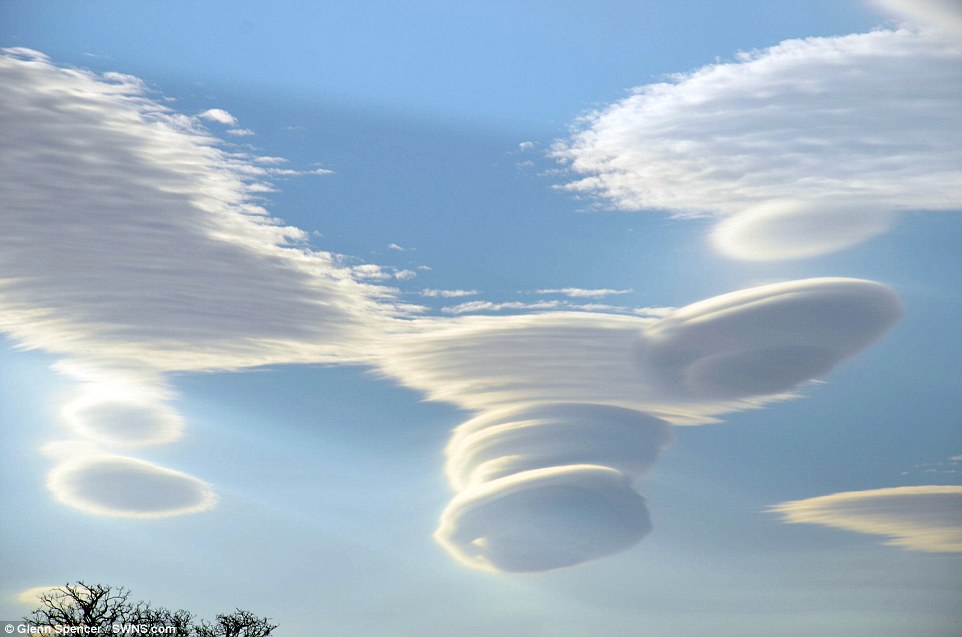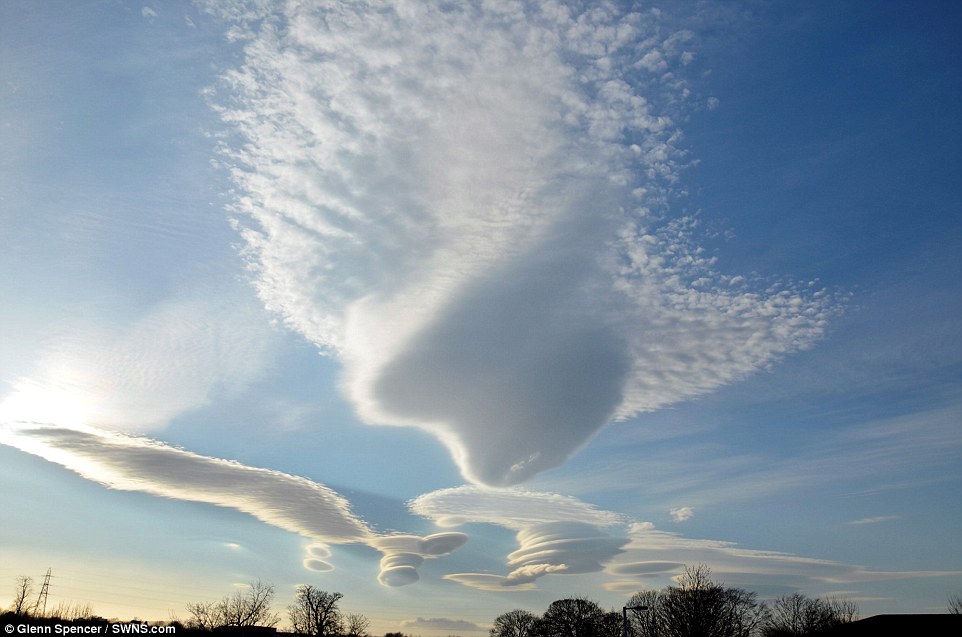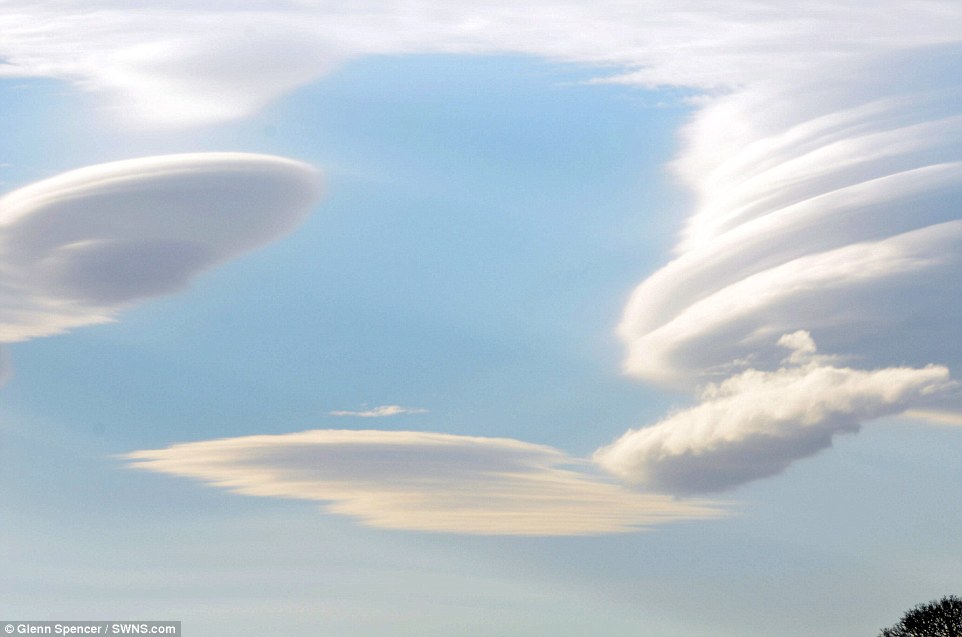
Rare spectacle: These lenticular clouds, also known as altocumulus standing lenticularis, are hardly ever seen in British skies
Swirling through the air in mesmerising saucer-like shapes, these exceptionally rare lenticular clouds are the most common explanation for UFO sightings. The remarkable-looking disc shapes were spotted by amateur photographer Glenn Spencer, 42, in the sky above Chester in Cheshire.
The formations, also known as wave clouds, were scattered over miles, producing a stunning spectacle. Rarely seen in the UK, lenticular clouds are formed when a tall geographic feature, such as the the top of a mountain, obstructs a strong wind.
The interruption in airflow creates a wind wave pattern in the atmosphere on one side of the mountain and at the top of these waves, moisture in the air condenses and forms a cloud. As air moves down into the trough of these waves the water evaporates again, leaving behind clouds in a characteristic lenticular shape.
Mr Spencer noticed them while driving to the shops and was so amazed that he stopped the car to retrieve his camera from the boot. He said: 'I tried to follow them to higher ground to get a good view. They were just so mesmerising and I thought they looked amazing. It is easy to see why people mistake them for UFOs. They are brilliant. I've never seen anything like it.'

Stunning: They form when wind blows over high ground and then undulates down in a stream of waves creating a rippled effect as the air cools

Pilots of powered aircraft tend to avoid flying near lenticular clouds because of the turbulence of the rotor systems that accompany them
Comment: There have been a number of rare cloud formations observed in the skies lately. Some, such as
this one in Australia have a recognizable cause, this one being a
Fallstreak Hole. Other factors which may contribute to these '
strange skies' are
possible comet dust loading and changes in the layers of the atmosphere.
An indicator of this dust loading is the observed
intensification of noctilucent clouds. As explained in Pierre Lescaudron's book,
Earth Changes and the Human-Cosmic Connection:
The increase in noctilucent clouds is one of the effects - among others - of increased dust concentration in the atmosphere in general, and in the upper atmosphere in particular. We suspect that most of this atmospheric dust is of cometary origin, while some of it may be due to the recent increase in volcanic activity.






Comment: There have been a number of rare cloud formations observed in the skies lately. Some, such as this one in Australia have a recognizable cause, this one being a Fallstreak Hole. Other factors which may contribute to these 'strange skies' are possible comet dust loading and changes in the layers of the atmosphere.
An indicator of this dust loading is the observed intensification of noctilucent clouds. As explained in Pierre Lescaudron's book, Earth Changes and the Human-Cosmic Connection: